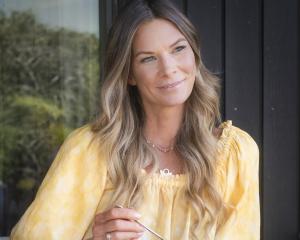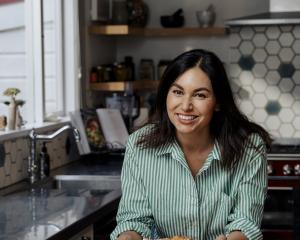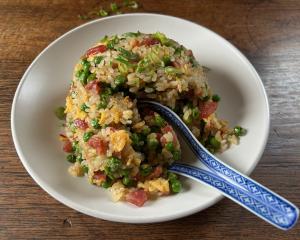Some people put away wines from their children's birth year to open on their 21st, but only a few wines are worth drinking after a decade, and only a couple of dozen in the world are built to develop and mature for half a century or more.
Wines like these attract collectors who buy them every vintage and scour auctions for older vintages.
Such collectors sometimes generously host vertical tastings for wine-enthusiast friends to compare and contrast the variations between them, and to see them with food.
You read about events like this in Europe or the United States, but here in Dunedin one such dedicated collector, Chris Staynes, celebrates his significant birthdays with tastings from his collection of Chateau d'Yquem, often regarded as the greatest sweet wine in the world.
He and his wife Cheryl celebrated his 40th birthday in 1990 hosting a tasting of 20 vintages of Chateau d'Yquem, his 50th with 35, and recently, his 60th with a tasting of 30 vintages, from 1946 to 2006, followed by a degustation dinner at TECHnique Restaurant with courses matched to three different vintages.
Mr Staynes said his fascination with Yquem started more than 25 years ago after tasting a bottle from the Wine Federation of Otago's cellar which amazed him with its power, weight and length and impressed him more than any other wine he had tasted.
When a bottle of the 1950 (his birth year) came up for auction in 1986 he was persuaded by fellow wine enthusiasts Raymond and Norman Chan to bid for it - he bought it for $900.
Then he realised he couldn't just have one bottle - "You can't open these just for yourself," he said.
So he started collecting other vintages, buying bottles as they were released from the chateau, scouring auctions for older vintages and buying them whenever he sees them at a good price.
However, with en primeur (pre-release) prices for the latest vintage reaching around $1600, he says he will not be able to do so much longer.
Chateau d'Yquem is in Sauternes in France, and is known for its long-lived, sweet wines made from botrytised semillon and about 20% sauvignon blanc aged in oak.
It's an intense, complex wine, its golden hues turning tawny with age, concentrated, luscious, and rich, but with a high acidity that balances the sweetness.
The younger wines - a decade or so old, were remarkably consistent with hints of marmalade, nuts, apricot, tropical fruit, honey, sometimes fennel, toffee, and supportive spicy oak, but always textural - all the components you expect but perhaps not as integrated as they will become.
Some of them will no doubt be drinking superbly in 40 or 60 years.
The wines from the 1970s and early '80s, around 30 to 40 years old, had integrated, and become more individual and harmonious.
Notes of creme brulee morphing to burnt caramel in older wines, toasted nuts, dried fruit and underlying citrus became more characteristic.
In the 1960s the estate went through tough times due to inheritance tax and the wines were perhaps a little lighter though still charming and complex.
Any of these wines by themselves would have been a wonderful treat, but tasting so many showed how they developed and changed over time, and also the evolution in production.
Two wines from the 1950s and the remarkably vibrant 1946, made in the privations following World War 2, demonstrated how good wine will age if stored in suitable conditions.
Repeating such a tasting at 10-year intervals made it interesting to see the same vintages at different stages of their development, Mr Staynes said.
With older wines, bottles vary in quality, depending on cork and storage conditions.
Of the more than 30 bottles opened, four, or possibly five, suffered cork taint, showing that even top producers using the best corks are not immune to the problem, he said.
Despite being a botrytised, sweet wine, Yquem is so well balanced and so complex, it goes well with savoury dishes.
Mark Lane of Otago Polytechnic's TECHnique Restaurant said with its spicy, earthy, woody notes, the wine lent itself to many flavours.
He and his team matched it with classic dishes cooked in contemporary ways: a Central Otago rabbit terrine with quince jelly, a salad of bitter endive leaves and pickled walnuts; a stunningly simple crayfish cooked sous vide (vacuum packed and slowly poached) with a hot seaweed jelly in a saffron broth; pork belly cooked sous vide for 12 hours until it melted in the mouth, served with bean puree and black pudding which added a spicy note that was perfect with the 1997 Chateau d'Yquem; hazelnut souffle and apricot ice cream; followed by blue cheeses that are classic accompaniments to Sauternes.












